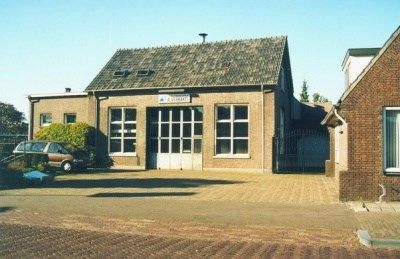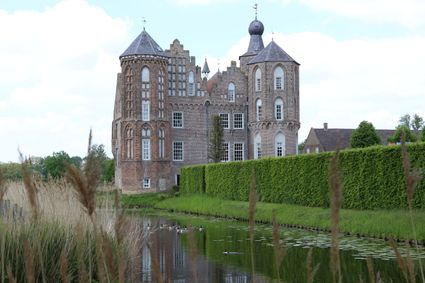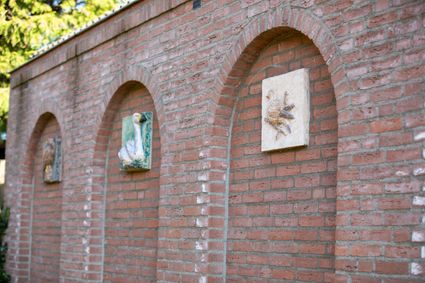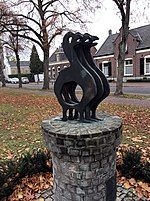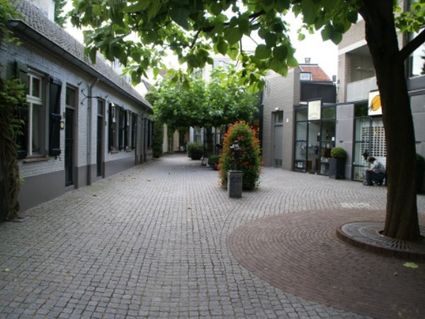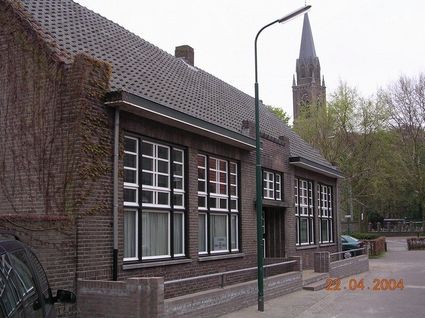School Kleuterschool | De Mortel
Neem contact op
The Mortar. In this small building the egg packing room and the kindergarten were housed, the, even smaller, flat extension was for the sewing school and the drama society. Diagonally behind it is still the egg union, which also served as the office of the Farmers' Loan Bank.
At the Oude-Molenweg, named after an old, long demolished mill (which was built from the stone…
The Mortar. In this small building the egg packing room and the kindergarten were housed, the, even smaller, flat extension was for the sewing school and the drama society. Diagonally behind it is still the egg union, which also served as the office of the Farmers' Loan Bank.
At the Oude-Molenweg, named after an old, long demolished mill (which was built from the stones of the old church of De Mortel) are still the remains of an important economic center of this village. You wouldn't know it but the building in the photo was once the home of the kindergarten, egg packing place, sewing school and drama society. There is another small building half behind that still has Egg Society St. Lucia on it. In now demolished buildings was the butter factory (called Mortels Welvaren). They started small and expanded in 1928, the first butter factory then became a warehouse and the Farmers' Loan Bank. Why are these functions so important today? In the early 20th century, De Mortel was a small predominantly agricultural village. In 1735 there were about 350 inhabitants living in 70 houses, in 1925 that number was 500 inhabitants That is not great growth. Therefore, the Peel soil was very poor. Farmers in the early 20th century were often poor, too. They mostly had mixed farms and churned their own butter and brought their own eggs to the local market or at a streetcar unloading point. But they also often had debts with the local middle class. The middle class was smart and said, you can pay me in eggs or butter if you have no money, but at my price for the eggs. So that was nowhere near the best price. The butter factory founded in 1908 and the egg association, founded in 1922 changed this. Under the influence of the Boerenbond, the products were collectively collected in a warehouse and sold in the large butter and egg mines in Eindhoven and Maastricht. The butter in such a butter factory was also often of better quality than when churned at home. At some point in the sixties the wholesalers started collecting the eggs from the farmer and that was the end of the egg society, but in the forty or so years of its existence it had raised half a million guilders. The farmer got more money in his hands on a more regular basis and situations such as forced shopping were less common, although the management of the communal warehouse was not always neat either.
The advent of artificial fertilizer, also at the beginning of the 20th century, allowed more hay to be grown and cows became one of the most important industries, with an emphasis on dairy production. Chickens and pigs also became more important, and the mixed farm gradually became less mixed. Of course, not everything went smoothly. De Mortel was part of the municipality of Gemert and the Gemert council was split in two, with the Boerenbond on one side and the local alternative Isidorus on the other. There was stiff competition between the two, but the Boerenbond had the support of the church and eventually won. Therefore, in Gemert and De Mortel, the Farmers' Loan Bank was established relatively late, in 1915 and 1923 respectively.
Sources:
K. van der Heijden et al, Mortel Ons Dorp, Mortel Steering Committee Foundation, 1992, Mortel
P.H.M. Thissen, Heide ontginning en modernisering: In het bijzonder in drie Brabantse Peelgemeenten 1850-1940, Uitgeverij Matrijs, 1993, Utrecht
